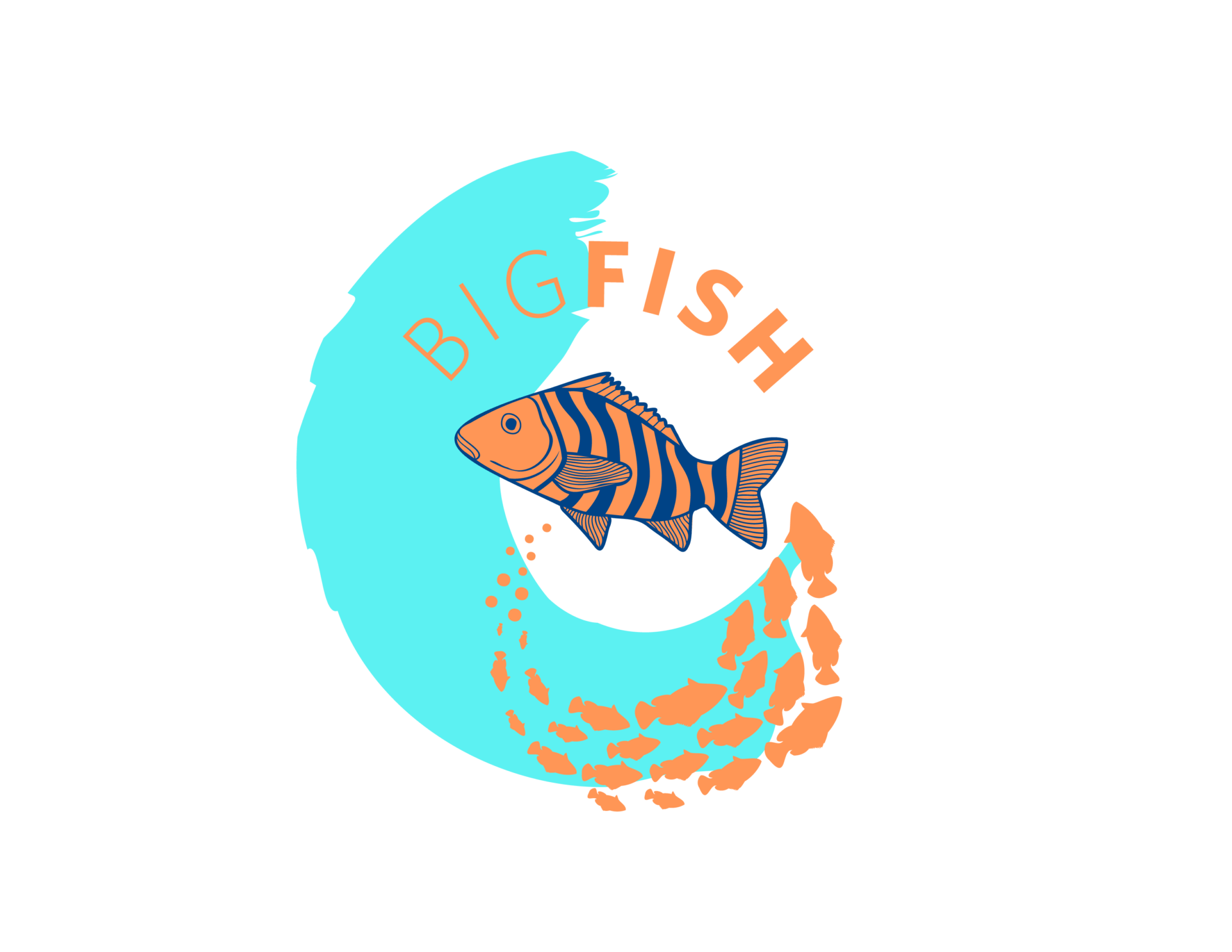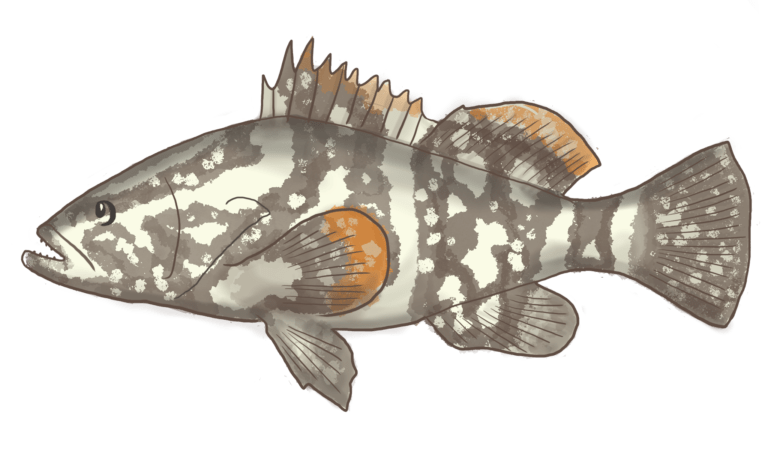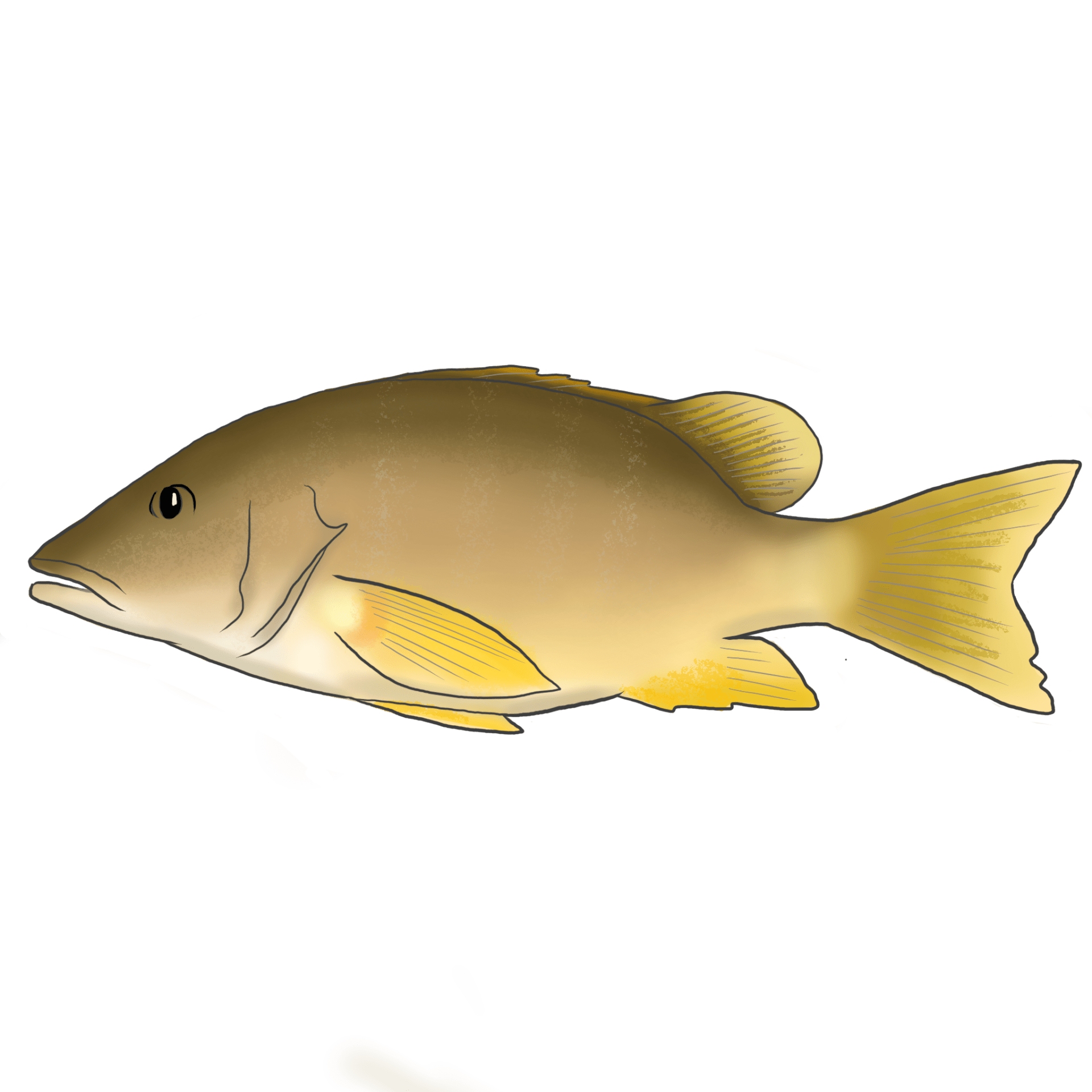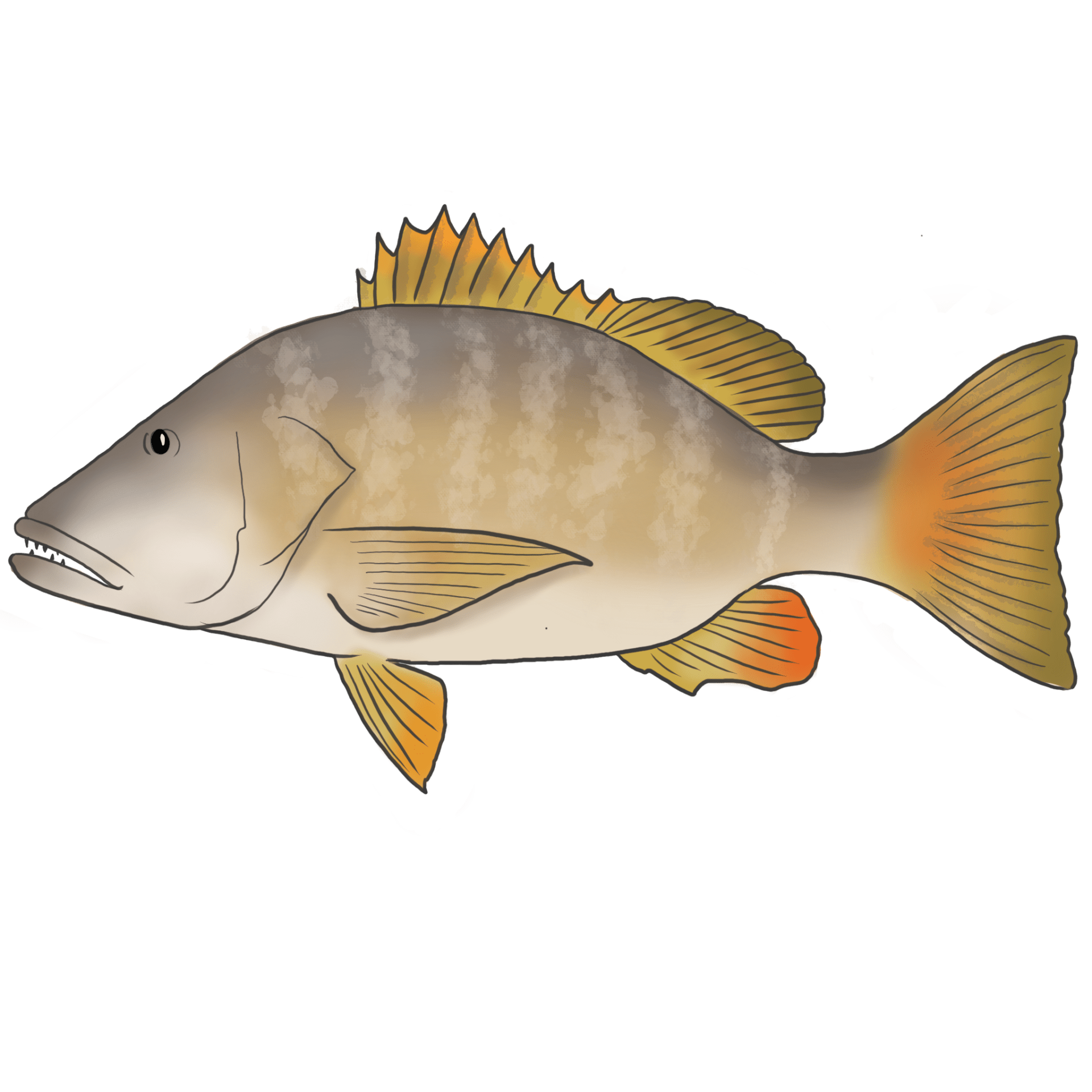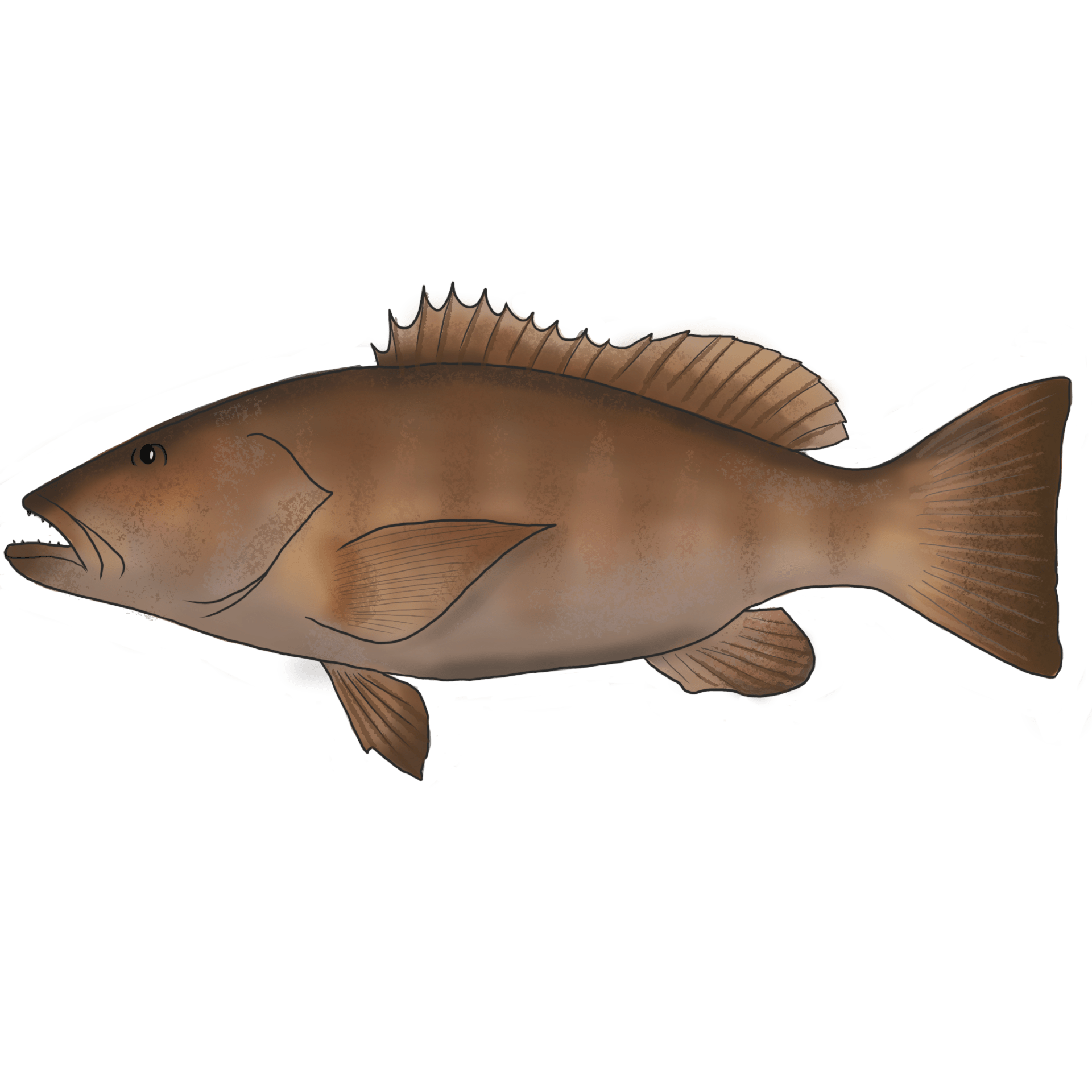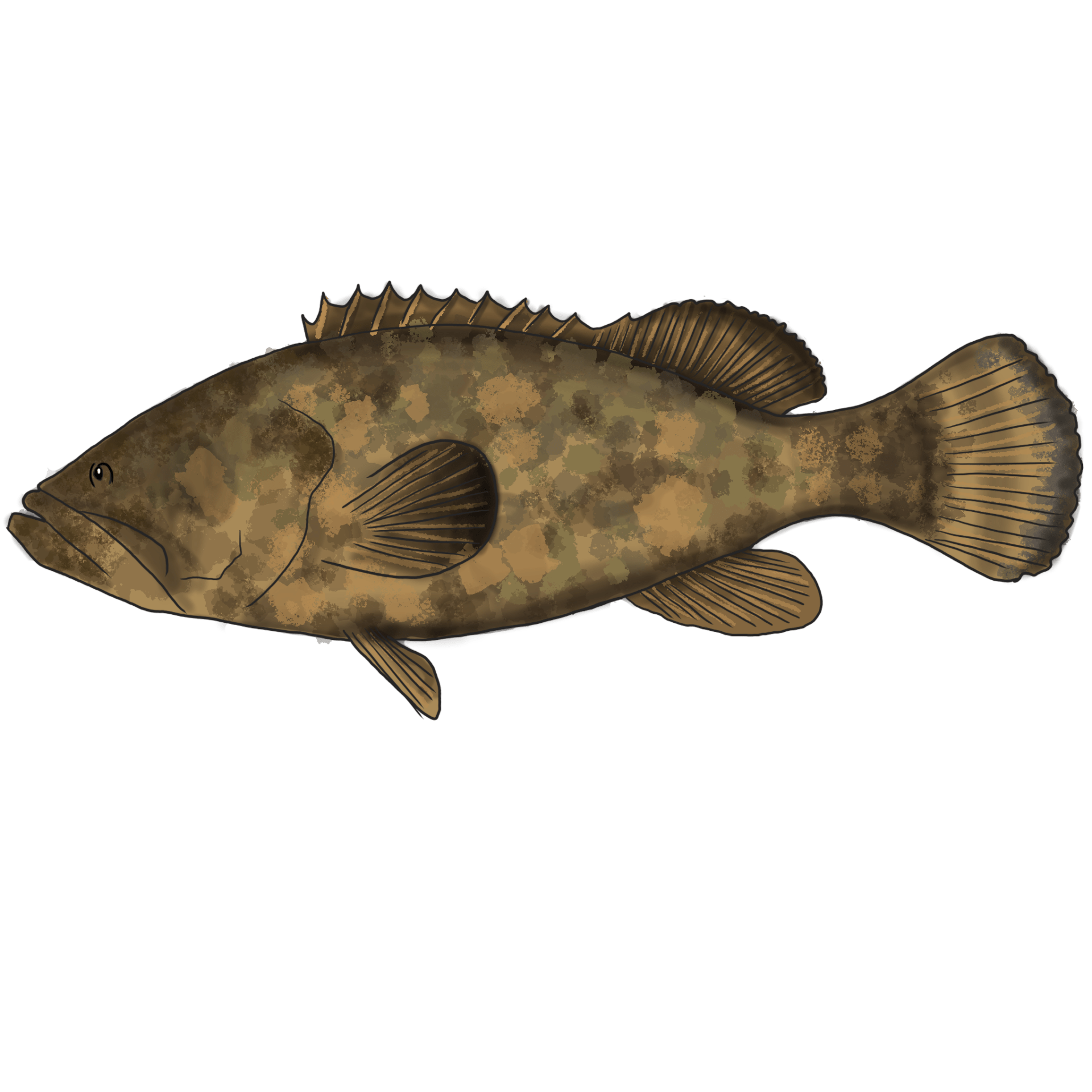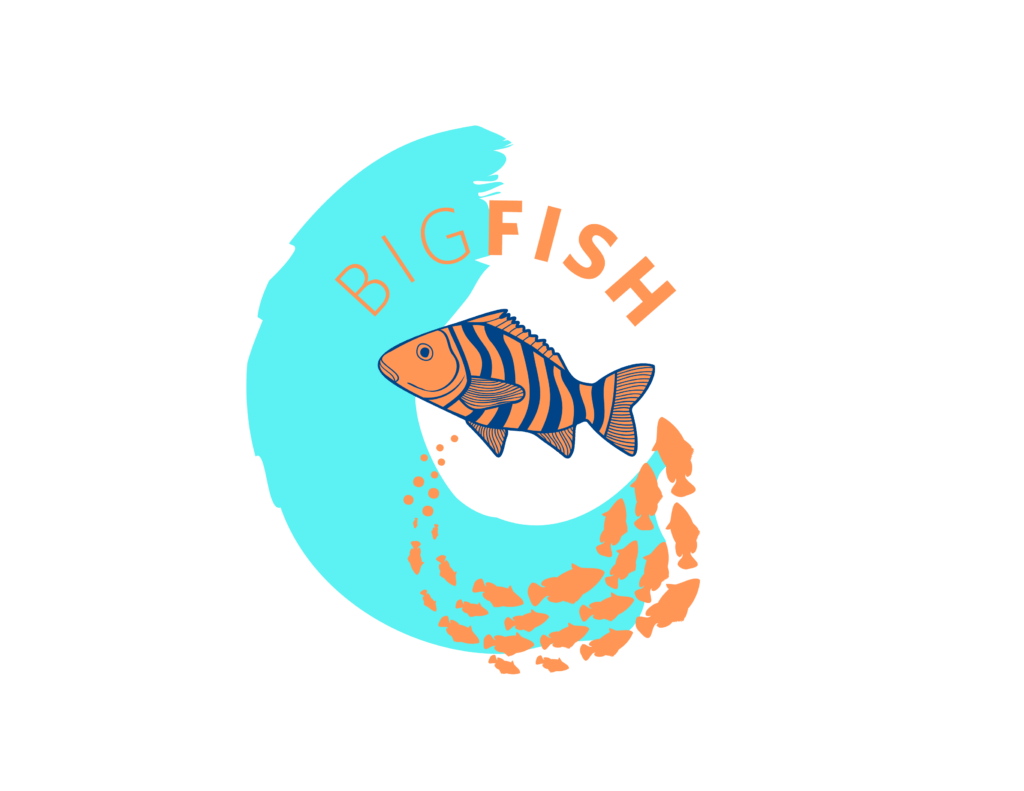Le poisson intelligent
Regardez cet appel à l'action de pêcheurs à pêcheurs. Écoutez vos pairs : La pêche FSA ne paie pas. Pratiquez la pêche intelligente ! Protégez les agrégations de frai (FSA) pour assurer la prochaine génération de poissons. Plongez dans le comportement des espèces qui se rassemblent pour frayer dans les Caraïbes et assistez à cet événement spectaculaire. Découvrez l'importance vitale de la participation des pêcheurs au processus décisionnel et de la recherche d'alternatives lors des interdictions de pêche.
En savoir plus sur vos pairs et les contacter
Réseau de pêcheurs Big Fish
Bienvenue sur le réseau Big Fish Fisherfolk Network, où les passionnés de pêche de tous niveaux se réunissent pour partager leurs connaissances, leurs expériences et leur camaraderie. Notre communauté accueille tout le monde, des débutants aux pêcheurs chevronnés, et offre une plateforme pour se connecter par le biais de forums, de chats en direct et de rencontres locales. Que vous échangiez des histoires ou que vous cherchiez des conseils sur les techniques et le matériel, notre réseau offre un environnement propice à l'apprentissage et à l'épanouissement.
Célébration des ambassadeurs GMA Fishers
Depuis 2004, l'Institut des pêches du Golfe et des Caraïbes a décerné à 25 pêcheurs durables de 15 pays le prix Gladding Memorial, en hommage à l'héritage de Peter Gladding et à leurs contributions à leurs communautés et à la région. Regardez la vidéo pour découvrir l'histoire inspirante de Peter Gladding et rencontrer ces pêcheurs exemplaires.
Rencontrez nos héros !
Espèces commerciales qui se regroupent pour frayer
Découvrez nos espèces de poissons fascinantes
Découvrez les caractéristiques et les comportements uniques de nos diverses espèces de poissons. Du poisson-clown coloré au majestueux marlin, chaque poisson a sa propre histoire à raconter.
Un avenir durable
Moyens de subsistance alternatifs
Explorer d'autres moyens de subsistance est un excellent moyen de s'assurer des sources de revenus supplémentaires pendant les saisons de fermeture et d'ajouter des revenus à vos activités de pêche. Nous allons nous plonger dans le parcours de plusieurs pêcheurs qui ont plusieurs carrières et qui ont réussi à assurer leur subsistance tout au long de l'année en développant leurs compétences maritimes et en explorant de nouvelles activités liées à la mer.
- L'exploration de moyens de subsistance alternatifs n'est pas un plaidoyer contre la pêche, mais plutôt une garantie de sources de revenus supplémentaires.
- Les connaissances et les compétences des pêcheurs sont des atouts précieux sur lesquels il faut s'appuyer et qu'il faut développer.
- Les connaissances générationnelles des pêcheurs sont complémentaires de la recherche scientifique. Le partenariat improbable entre pêcheurs et scientifiques a été déterminant pour la gestion durable de la pêche et la conservation des écosystèmes marins.
- La participation des pêcheurs aux processus de recherche, de surveillance et de prise de décision est essentielle pour que les plans de gestion profitent aux communautés de pêcheurs.
- Le renforcement des capacités et les possibilités de financement sont nécessaires à la réussite des projets de conservation menés par les communautés.
- Il est essentiel d'aider les pêcheurs à diversifier leurs compétences pour assurer leur résilience financière pendant les périodes de fermeture.
- Le changement climatique continue de poser des défis aux communautés côtières. La sensibilisation et le partage des connaissances aideront les pêcheurs et les autres parties prenantes à faire face à une mer en mutation.
Par l'empathie, le respect et l'amour de la mer, ouvrons la voie à un avenir durable pour tous.
L'histoire de Kenworth "Kenny" Martin

Né et élevé dans une communauté de pêcheurs, le lien de Kenny avec la mer a commencé avant même qu'il ne sache marcher. Des années passées en tant que pêcheur commercial l'ont finalement conduit à la pêche au gibier à l'âge de 17 ans, façonnant ainsi son parcours professionnel. Cependant, c'est par le biais de la plongée sous-marine que Kenny a été confronté aux répercussions de son approche de la pêche sur la vie marine et les récifs. Cette révélation a déclenché une transformation en lui. En passant à un rôle de garde-forestier au sein du département des pêches du Belize, Kenny a consacré des années de sa vie à la lutte contre la pêche illicite, non déclarée et non réglementée (INN). Son travail actuel s'articule autour de la recherche scientifique et du tourisme, en tant que divemaster lors d'expéditions scientifiques et de plongée, et en tant que guide touristique lors d'excursions de pêche à la mouche. La vaste expérience de Kenny lui permet de comprendre en profondeur les écosystèmes récifaux et le besoin urgent de mesures de conservation. Il fait le lien entre les différentes parties prenantes et plaide en faveur de pratiques durables et de la gestion des ressources. Dans sa quête incessante de durabilité, le cœur de Kenny reste attaché à la mer, où il continue de pêcher de manière responsable.
Maître de plongée
Le rôle d'un capitaine de plongée ne se limite pas à l'exploration et à la recherche ; il s'agit d'un engagement à mieux comprendre les conséquences de nos actes et à sauvegarder nos domaines sous-marins. Des pêcheurs comme Kenny Martin sont l'exemple d'un mélange de formation rigoureuse et d'intendance sincère nécessaire pour assurer la sécurité et le plaisir des scientifiques et des plongeurs de loisir. Rejoignez ce domaine pour devenir le guide officiel de l'exploration de votre monde sous-marin et en tirer profit.
Assistant de recherche

Participez au processus scientifique ! Apportez vos connaissances locales approfondies en travaillant avec les scientifiques pour obtenir une image complète de ce qui se passe dans l'eau. La coopérative de pêcheurs ‘Vigía Chico’ contribue à la recherche, à la collecte de données, à la surveillance et à la protection des sites vitaux de reproduction des poissons, et s'appuient à la fois sur les connaissances locales et sur des méthodologies modernes. Comme ces pêcheurs mexicains, vous pouvez également suivre une formation et approfondir vos connaissances. Votre contribution est essentielle à la compréhension et à la sauvegarde des écosystèmes marins.
Guide touristique

Devenez un défenseur de la conservation locale en menant des expéditions océaniques et des circuits de pêche récréative en tant que guide touristique. Grâce à des expériences scientifiques, récréatives et immersives, comme celles guidées par Eloy Cuevas, vous pouvez gagner beaucoup d'argent, tout en incitant les visiteurs à chérir et à protéger vos eaux.
Garde forestier

Entrez dans la peau d'un garde forestier et rejoignez les premières lignes de la conservation locale et de la gestion durable de la pêche. En appliquant les réglementations et en travaillant à la protection des sites de reproduction des poissons, vous jouez un rôle essentiel dans la préservation des écosystèmes marins dont dépend votre communauté côtière. Rejoignez la mission #ProtectYourCatch.
Ressources
Nous tenons en haute estime votre dévouement et votre altruisme inhérents à votre mode de vie. Vous naviguez dans des eaux imprévisibles, au sens propre comme au sens figuré, pour assurer votre subsistance et votre gagne-pain. Personne mieux que vous ne connaît vos eaux. Nous apprenons de vous, mais nous voulons aussi contribuer à vous fournir des informations sur les possibilités qui s'offrent à vous.
Des communautés responsabilisées peuvent être à l'origine de la reconstitution des espèces. La conservation menée par les communautés peut devenir une réalité grâce à des initiatives de renforcement des capacités qui vous permettent de participer à des projets scientifiques, à des efforts de surveillance et à des processus de prise de décision. Il n'est pas juste de vous demander de vous abstenir de pêcher, sans vous guider vers des pratiques durables qui garantissent un océan généreux pour vous, vos communautés et les générations à venir.
Ressources de formation
VIRTUAL FISHERIES ACADEMY - Environmental Defense Fund
Explorez la Virtual Fisheries Academy de l'Environmental Defense Fund, un sanctuaire de connaissances où les gestionnaires de la pêche, les pêcheurs, les scientifiques et d'autres personnes convergent pour apprendre et diriger dans le domaine de la gestion durable de la pêche.
PROGRAMME DE DÉVELOPPEMENT PROFESSIONNEL DE LA PÊCHE DANS LE GOLFE ET LES CARAÏBES Sea Grant Floride
Florida Sea Grant offre des opportunités de développement de carrière qui favorisent une plus grande collaboration, une synergie et un partage des connaissances entre les organisations qui gèrent et promeuvent la durabilité des pêcheries du Golfe du Mexique et des Caraïbes.
FORMER LES FORMATEURS - Coral Reef Alliance
Découvrez les possibilités de formation à la plongée offertes par la Coral Reef Alliance, qui vise à surveiller et à préserver les récifs coralliens de la région méso-américaine.
FORMATION MARITIME - Institut de formation et de développement des pêches des Caraïbes
Découvrez les cours maritimes de l'Institut de formation et de développement de la pêche des Caraïbes, conçus pour doter le personnel maritime des compétences nécessaires pour relever tous les défis en mer.
Cours en ligne sur les modes de vie durables - Reef Resilience Network
L'étude d'une diversité d'initiatives en matière de moyens de subsistance durables, des conditions propices à la réussite des entreprises communautaires et des meilleures pratiques pour favoriser des partenariats solides avec les communautés.
Ressources financières
BOURSE Z - Mar Alliance
La bourse Mar Alliance Z vise à former une nouvelle génération de gardiens de l'environnement marin en donnant aux enfants de pêcheurs les moyens d'agir. Ensemble, ils visent à inverser la tendance au déclin et à favoriser l'héritage de la conservation marine.
BOURSE DE PÊCHE RESILIENTE AU CLIMAT - Sustainable Ocean Alliance
Embarquez pour un voyage de résilience avec le Climate Resilient Fisheries Fellowship de la Sustainable Ocean Alliance. Ce programme offre des subventions et des opportunités de mentorat aux acteurs du changement en début de carrière et aux membres de la communauté qui s'efforcent de protéger les pêcheries contre les impacts du changement climatique.
FONDS NATIONAL DE RÉSILIENCE CÔTIÈRE
Le Fonds national de résilience côtière, qui soutient les initiatives visant à protéger et à restaurer les écosystèmes marins dans l'intérêt des générations actuelles et futures, ouvre la voie à des possibilités de financement.
Dispositif de descente
Apprenez à reconnaître les poissons atteints de barotraumatisme et à relâcher les poissons vivants à l'aide d'un dispositif de descente pour favoriser la survie des poissons capturés accidentellement.
Qu'est-ce qu'un dispositif de descente ?
Un dispositif de descente ou de remise à l'eau est un outil permettant de remettre à l'eau les poissons qui ne respectent pas les règles de taille minimale, qui sont soumis à des règles de capture ou dont la capture est interdite en raison d'une période de fermeture de la pêche. Ce dispositif consiste en un simple système de poids visant à immerger le poisson et à le relâcher à la profondeur souhaitée, ce qui augmente les chances de survie du poisson après sa remise à l'eau.
A propos du film SALVAPEJE
Apprenez à reconnaître les poissons atteints de barotraumatisme et à relâcher les poissons vivants à l'aide d'un dispositif de descente pour favoriser la survie des poissons capturés accidentellement.
Titre : Salvapeje
Région : Caraïbes américaines (PR &USVI)
Année : 2024
Durée de l'enquête : 2 min 45 sec
Objet : Sensibilisation et éducation
Le public : Pêcheurs récréatifs et commerciaux, âgés de 20 à 60 ans, qui pratiquent la pêche démersale, y compris la pêche à la turlutte verticale à partir d'un navire dans la mer des Caraïbes.
Cast :
Anthony Elizo Vargas “Ritmicano” (PR CFMC DAP Member) : pêcheur commercial.
Marcos Hanke Herrero (PR CMFC DAP), capitaine, pêcheur et consultant. Propriétaire de 787 Fishing Charters.
L'équipe:
Direction : Dr. Michelle T. Schärer-Umpierre
Narration : Anthony Elizo Vargas “Ritmicano”
Cinématographie et édition : Raúl O. Ortiz-Arroyo “Pichón Duarte”
Script : Michelle Schärer-Umpierre, Anthony Elizo, Pichón Duarte, Cristina Olán
Son : Ricardo A. Dominguez
Production et sous-titres : Cristina D. Olán-Martínez
Financé par : Conseil de gestion des pêches des Caraïbes (CFMC)
Dispositifs de descente dans la Grande Caraïbe
Réglementation et utilisation :
Il existe une loi du Congrès en le golfe du Mexique qui exige des pêcheurs qu'ils disposent de dispositifs de descente et/ou d'outils de ventilation prêts à l'emploi. Les Renvoyez-les comme il se doit Dans le Golfe, le programme de la Commission européenne vise à accroître la sensibilisation et l'utilisation des dispositifs de descente. Pour en savoir plus sur ce programme, cliquez ici : https://returnemright.org/
Dans le cadre de la Région de l'Atlantique Sud (SA), la loi exige que les dispositifs de descente soient à bord et prêts à l'emploi. Dans l'AS, la loi impose à tout pêcheur ciblant le mérou de disposer d'un dispositif de descente prêt à l'emploi. En savoir plus : https://safmc.net/best-fishing-practices/
Commission de la pêche et de la faune sauvage de Floride contient des informations supplémentaires et de nombreuses vidéos “comment faire”. Visitez le site https://myfwc.com/fishing/saltwater/
Vous trouverez une bibliographie complète ici : https://myfwc.com/fishing/saltwater/
Où peut-on se procurer ces dispositifs de descente ?
Clause de non-responsabilité du CFMC
Le Conseil de gestion de la pêche des Caraïbes n'approuve aucune des marques commerciales ou des entreprises qui vendent des dispositifs de descente.
- Seaqualizer - https://seaqualizer.com/
- Magasins spécialisés dans la marine, en ligne ou non, et magasins d'articles de pêche.
- Le Conseil de gestion des pêches des Caraïbes (CFMC) : Le Conseil offre l'appareil gratuitement aux pêcheurs américains des Caraïbes, après avoir reçu la formation coordonnée par les officiers de liaison.
Clause de non-responsabilité de BFI
La Big Fish Initiative ne cautionne aucune des marques ou entreprises qui vendent des dispositifs de descente.
FAQ
Quels types de poissons se reproduisent par agrégations de frai ?
De nombreuses espèces de poissons se reproduisent par le biais d'agrégations de frai. La plupart d'entre elles sont des poissons marins, y compris des espèces de récifs d'eau chaude comme le vivaneau et le mérou, ainsi que des espèces d'eau froide précieuses comme la morue de l'Atlantique. Plus de 200 espèces de poissons marins appartenant à plus de 40 familles forment des agrégations de frai résidentes ou transitoires à des moments et dans des lieux spécifiques (Rosemond et al., 2022). Les principales espèces halieutiques mondiales, telles que le colin, la morue, le capelan, le maquereau de l'Atlantique, le pilchard et le hareng, frayent également de cette manière (FAO, 2014 ; Sadovy de Mitcheson, 2016). Selon le SCRFA (2024), plus de 100 espèces de poissons de récifs, dont de nombreux mérous, vivaneaux, marsouins, poissons-chirurgiens, poissons-lapins, poissons-perroquets, mulets et labres, se regroupent pour frayer, ce qui souligne la nécessité d'une gestion visant à soutenir ces espèces et leurs pêcheries.
- FAO] Organisation des Nations unies pour l'alimentation et l'agriculture. 2014. www.fao.org/3/a-i3720e.pdf
- Rosemond et al, 2022. Frontiers in Marine Science. https://doi.org/10.3389/fmars.2022.931409
- Sadovy de Mitcheson, 2016. BioScience. https://academic.oup.com/bioscience/article/66/4/295/2464056
- Site web du SCRFA. Mai 2024. https://www.scrfa.org/aggregations/what-are-aggregations/
Combien de pêcheurs profitent des frayères dans les Caraïbes et dans le monde ?
Des centaines de milliers de pêcheurs profitent des agrégations de frai dans le monde entier. Ces pêcheries sont cruciales à l'échelle locale, régionale, nationale et mondiale, et concernent des espèces telles que le colin, le cabillaud, le maquereau, la sardine, le hareng et les poissons de récif. Les bénéfices s'étendent aux pêcheurs artisanaux, récréatifs et commerciaux, et impliquent des chaînes d'approvisionnement complexes comprenant les dockers et les pêcheurs, les détaillants et autres.
Que se passera-t-il si nous continuons à pêcher les agrégations de frai sans aucune gestion ?
La surpêche des agrégations de frai peut gravement perturber les populations de poissons, comme on l'a vu avec le mérou de Nassau, qui était autrefois une espèce abondante. La pêche incontrôlée de grands individus féconds réduit considérablement le stock de reproducteurs, ce qui entraîne l'effondrement des agrégations de reproducteurs productifs à l'échelle locale et potentiellement régionale. Cette pratique non durable nuit à la pêche et à l'écosystème dans son ensemble.
Quelle est l'importance de chaque agrégation pour la population locale de poissons ?
L'importance d'une seule agrégation pour la population locale de poissons est considérable. Les sites de concentration concentrent souvent des géniteurs migrateurs provenant de vastes zones, ce qui les rend vitaux pour la durabilité de la population locale. La pêche de concentration non gérée réduit le stock de reproducteurs, diminuant la production d'œufs et de larves et donc le nombre de juvéniles et d'adultes. Les agrégations uniques peuvent être essentielles pour les populations locales, surtout s'il y a peu de larves provenant d'autres sources pour les reconstituer.
Pour sauvegarder les zones de pêche, quelle est la meilleure solution : une protection spatiale (aires marines protégées) ou saisonnière ?
Les stratégies de conservation efficaces comportent souvent plusieurs niveaux de protection, notamment des limites de capture, des limites saisonnières et des limites spatiales (AMP). La meilleure approche peut varier d'un cas à l'autre. Par exemple, une ZMP saisonnière peut protéger un site mais pas les voies migratoires qui y mènent, alors qu'une fermeture saisonnière pourrait renforcer la protection. Il est essentiel d'établir la confiance et l'adhésion des pêcheurs locaux pour assurer le respect des règles et une gestion efficace.
Pendant des siècles, les communautés ont pêché les bancs de poissons sans les protéger. Pourquoi ont-ils besoin d'être protégés aujourd'hui ?
Les frayères ont besoin d'une protection accrue en raison de l'augmentation de la population humaine et de l'évolution des techniques de pêche. La population mondiale est passée de 1 milliard en 1800 à plus de 8 milliards aujourd'hui, ce qui a considérablement augmenté la demande en protéines et les pressions exercées par la pêche. Les progrès technologiques ont rendu la pêche beaucoup plus efficace, affectant tous les aspects du processus. Il est essentiel de protéger ces éléments clés des écosystèmes et de l'alimentation humaine afin d'éviter de nouvelles pertes.
Les vivaneaux et les mérous qui forment des agrégations de frai se reproduisent-ils à un autre endroit ou à un autre moment ?
En général, non. Les informations sur le frai sont limitées, même pour des espèces bien connues comme les vivaneaux et les mérous. Cependant, les données disponibles suggèrent que la plupart des espèces formant des agrégations de frai ne se reproduisent pas à d'autres endroits ou à d'autres moments.
